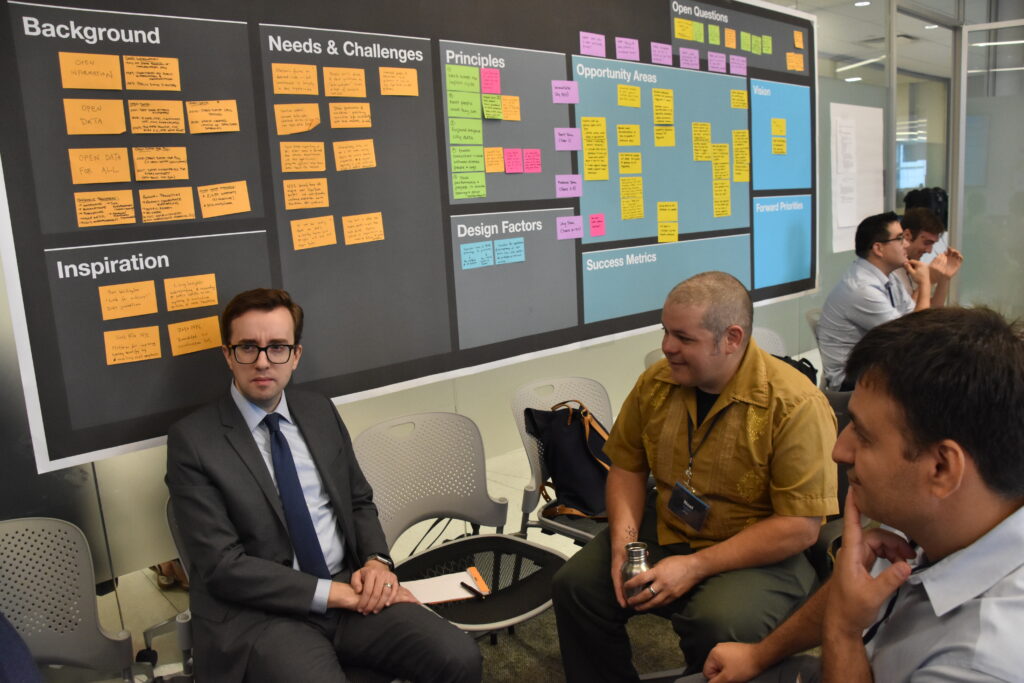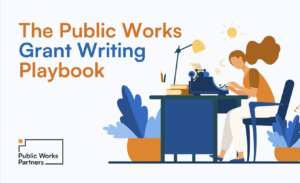
Strategic planning is stressful. Decisions have to be made, issues have to be prioritized, and impact needs to be judged dispassionately. Despite this, the infrequent exercise of committing to a medium-term plan is a must, lest you resign the organization to drifting with the currents of nonprofit waters. One observation the team here at Public Works has noticed is that it is quite easy to underestimate the emotional impact that strategic planning has on leadership, staff, and clients. Strategic planning adds an emotional load for leaders and staff, and de-stressing measures should be deployed liberally.
Think of it this way, if you don’t account for the emotional labor of strategic planning you run the risk of overburdening staff already overwhelmed with the existing stressors of nonprofit work. This can look like a drop in morale, quality reduction in services, and, at worst, the loss of staff and funding. On the other hand, accounting for emotional labor will result in a more welcoming experience for all stakeholders.
Why is Strategic Planning so Stressful?
Since most human service nonprofits work in critical needs areas, delaying services is not an option. Clients still need access to food, care assistance, and legal services. During the strategic planning process, staff leading the efforts tend to offload their work to direct reports or cram in the work during lunch or after hours. This additional workload tends to be seen as a temporary hardship, but it can have a cascading effect on staff. Leadership must be strategic in determining how to mitigate this stressor. In one of our strategic planning engagements, it was clear that this was having an impact on staff. They were already understaffed and the strategic planning process became very taxing leading to staff sharing grievances in a less productive fashion.
A more insidious stressor tends to fester in uncertainty. A strategic plan brings change and we know that humans just don’t do well with change. Perhaps a team is concerned that the new plan will deprioritize its work while another set of staff is concerned about a shift in mission. Not knowing what’s coming next mixed with a passion for one’s work is a recipe for high-level stress. In another engagement of ours, it was the board that shared trepidation and some strong reactions to issues brought up throughout the planning process.
Potential Solutions
A thorough strategic plan builds consensus among staff and leadership towards a shared vision and grander impact. However, additional deliberate efforts can be made to help minimize, though not eliminate, stress. At Public Works, we’ve seen several effective solutions.
To start, strategy is not something we relegate to every few years. Regular reflection among leadership, robust staff and client feedback loops, and deliberately involving staff are all smart tactics to deploy. These smaller steps will help identify issues more timely and better inform a strategic plan. It could also help allay concerns and fears among staff and leadership, including the board.
Next, a thorough change management plan is an essential component of a strategic planning process. This includes a robust communication plan with genuine opportunities for feedback and information sharing. Ideally, a point person is assigned ownership over the plan to ensure that all stakeholders are updated, and concerns are voiced and legitimately addressed. During these times you cannot over-communicate. There is a range of useful tools that can be employed, such as creating an internal newsletter specifically dedicated to the planning process and conducting town halls.
Another approach to reduce stress is to ensure enough time is given to the process. Due to the high demands for existing services, some organizations can allocate only a few months for the strategic planning process. A proper exploration of the issues and trends should last no less than six months, considering the need for interviews, focus groups, and surveys. If this timeline is truncated, an organization runs the risk of not only missing crucial information, but applying a significant level of stress on staff leading the planning process.
Finally, though not explicitly connected with strategic planning, leadership must engender a culture of comfort with uncertainty through development opportunities, coaching, compassion, and transparency. A two-day training is not sufficient; this requires daily focus. Change is a constant and not developing the skills to deal with change effectively is a disservice to the organization, the mission, and to staff.
Stress is implicit in a strategic planning process. However, leadership can deploy stress-mitigating strategies like communicating actively through a change management strategy, allowing enough time buffers for strategic planning, and creating a culture comfortable with change. All of these efforts will help lighten the load and better position the organization and its staff to embrace the opportunities uncovered as the strategic plan unfolds, paving the way for growth and success.





 Public Works Partners is a WBE/DBE-certified urban planning and consulting firm. Our expertise lies in creating innovative, equitable, and sustainable solutions to complex problems.
Public Works Partners is a WBE/DBE-certified urban planning and consulting firm. Our expertise lies in creating innovative, equitable, and sustainable solutions to complex problems.